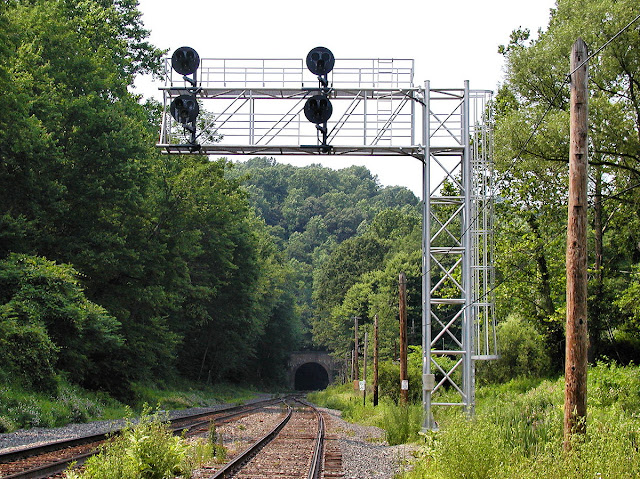The boom bust history of railroading in the Northeast United States has left a plethora of abandoned or disused infrastructure that was built on the wealth generated by industrialization and anthracite coal and then decimated by the decline of both. Early in my rail enthusiasm I was very much into this infrastructure of yesteryear as that was the focus of many of the available books and websites. During the summer of 2003 I had the opportunity to visit a couple of historic tunnel locations in New Jersey and Pennsylvania and took some photos that can be found here ( mirror ) and here ( mirror ). Twenty years later these photos not only capture the distant past, but also how much has changed since then.
North Jersey was much more on my radar in the late 90's and early 2000's due to the frequency of youth oriented activity trips to the Delaware Water Gap region for winter or summer outdoor activities. The two primary North-South routes, NJ Route 31 and US Route 206, intersected with all of the fallen flag main lines,
some of which, like the former Central RR of New Jersey main line,
retained NJT commuter commuter service. Here is a photo of the station
in High Bridge, NJ that serves as the terminus of the Raritan Valley
Line that had been cut back from Phillipsburg in 1986.
Situated on the approach to New Jersey's drainage divide, the CNJ main line traverses an impressive earthen fill through which the Raritan river and an adjacent road bore through in side-by-side tunnels. NJT's ARCH interlocking, located directly above the runnels at the end of the commuter line, is likely named for these
A short distance to the west, the Lehigh Valley Railroad passes through the same line of hills via the 3000+ foot long Pattenburg Tunnel. In 2003 the tunnel had recently been single tracked for double stack clearance purposes with the entire length falling within the limits of the new interlocking, CP-64.
The interlocking was new enough that the CorTen steel of the relay huts had not yet fully weathered. On the east side of the tunnel, CP-64 was occupied the former location of the LVRR's BELLEWOOD tower that had enabled passenger services to a nearby amusement park. The property was later converted into a quarry that itself was then abandoned.
The "New" Pattenburg Tunnel replaced an older bore in 1927. The remains of the previous 2-track configuration could still be seen. I would visit this location again in the winter of 2020.
Here is the western portal of the LVRR Pattenburg Tunnel. Interstate 78 passes over the railroad on the ridgeline.
A little ways to the northwest is the Manunka Chunk tunnel, located on what used to be the original DL&W Main Line between Washington, NJ and Shateford, PA known as the Lackawanna Old Road. The curvy route to the Scranton coal fields via the Delaware Water Gap was ultimately replaced by the more famous Lackawanna Cutoff, serving as a backup route until 1970 when it was completely abandoned. The twin bore Manunka Chunk tunnel allows the Old Road to transition between the Peaquest River valley and the Delaware River Valley.
Lined with rubble type rock, the Manunka Chunk tunnels have seen significant deterioration over the decades and are completely flooded in parts, making traversing them difficult without wading. Still, the rails are still present in at least one of the bores.



























